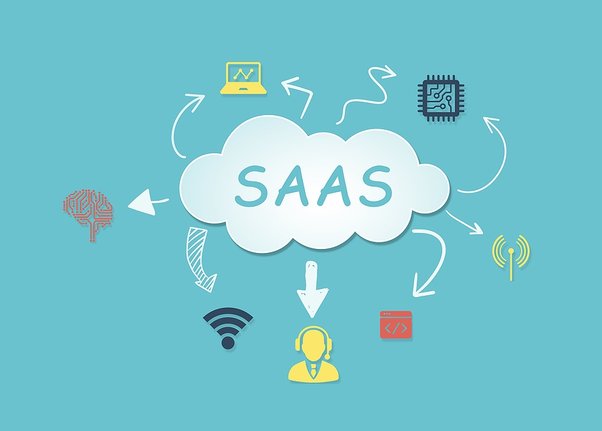
What Exactly Is SaaS?
A technique for delivering software as a service via the Internet is known as software as a service (or SaaS). Instead of installing and maintaining software, you just access it over the Internet, liberating yourself from the complexities of software and device maintenance.
SaaS programs are often referred to as web-based, on-demand, or hosted software. Whatever the moniker, SaaS apps are hosted on the servers of a SaaS provider. Application access is managed by the provider, covering security, security, and performance.
- Characteristics of SaaS
An excellent analogy for the SaaS model is a bank that preserves each customer’s privacy while offering dependable and secure services on a large scale. Customers of a bank utilize the same financial processes and technology without fear of unauthorized access to their personal information. A “bank” satisfies the following major SaaS model characteristics:
- Architecture for Multiple Tenants
A multitenant architecture where each user’s programs and infrastructure are handled centrally.
Because SaaS vendor customers share the same infrastructure and code base, suppliers may innovate more rapidly and save precious development effort that would otherwise be spent on supporting several versions of old code.
- Simple Customization
Each user’s capacity to readily customize programs to meet their business operations without compromising the shared infrastructure. The way SaaS is made ensures that each business’s or user’s customizations are distinct and always kept throughout upgrades. This implies that SaaS providers may update more often, with less client risk and a cheaper adoption cost.
- Improved Access
Improved data access from any networked device, while making it simpler to control rights, monitor data use, and guarantee everyone gets the same information at the same time.
SaaS Leverages the Consumer Web
The Web interface of common SaaS programs will be recognizable to anybody who has used Amazon.com or My Yahoo! The SaaS approach allows you to customize with point-and-click simplicity, making the weeks or months it takes to change conventional corporate software look hopelessly antiquated.
Trends in SaaS
Organizations are increasingly constructing SaaS integration platforms (or SIPs) to enable the development of new saas application development. The consulting company Saugatuck Technology refers to this as the “third wave” of software adoption, in which SaaS evolves from independent software functionality to a platform for mission-critical applications.
Packaged software vs. SaaS
Previously, organizations purchased and depended on packaged software, ranging from multi-application systems that included spreadsheets, databases, and email to specialized packages for activities such as project management or business analytics.
- The disadvantages of packaged software
- To utilize sales and marketing as an example, a company may have employed on-premises CRM software.
- The internal IT department was responsible for evaluating, purchasing, installing, securing, maintaining, and routinely upgrading this software on in-house systems.
- Using packaged software put a strain on the IT staff, which might lead to project bottlenecks.
- A company may find itself having to handle a broad range of systems concurrently, yet finding it difficult to connect them since they were programmed and designed differently.
- This method also included upfront expenditures for software and licenses, as well as prospective servers for the program to run on.
- CRM software and hardware expenditures may make it unaffordable for small enterprises. It may also be difficult to respond rapidly to development or change.
- Discover more about Sales Cloud and the advantages of cloud-based CRM.
Read more info: https://devoxsoftware.com/blog/top-50-programming-languages-to-learn-in-2022/
The Evolution of SaaS
Cloud computing and SaaS have gone a long way in a very short period of time. Increased awareness and use of SaaS products have expedited their expansion, resulting in the creation of SaaS Integration Platforms (SIPs) such as Infrastructure as a Service (IaaS) and Platform as a Service (PaaS) (PaaS). Non-core Them functions will continue to be outsourced to specialized service providers that can do it better. The cloud method may assist businesses in developing end-to-end integrated solutions, allowing them to focus on what they do best while outsourcing a broad variety of hardware and software IT difficulties to service providers.



